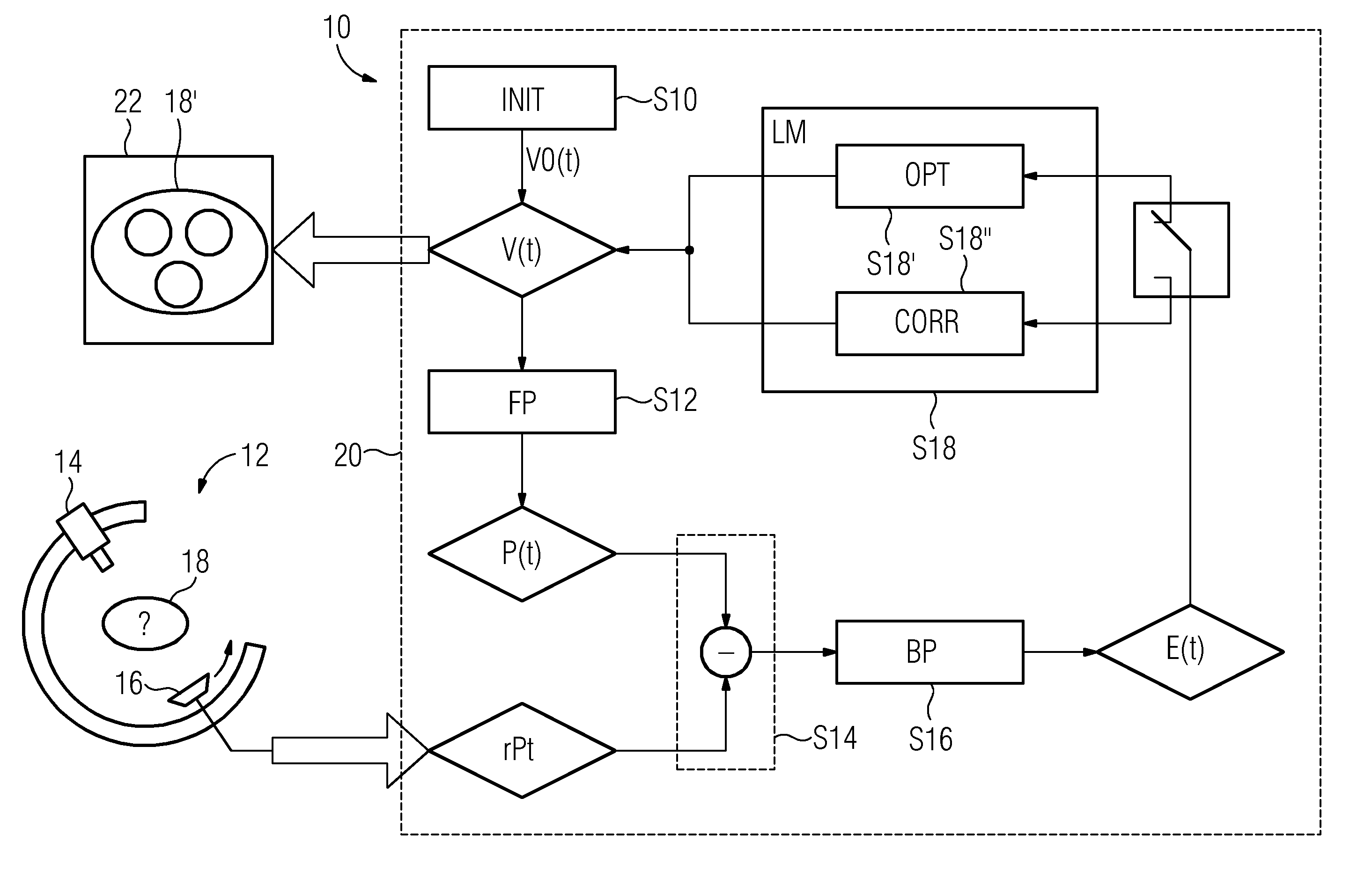Computed-tomography system and method for determining volume information for a body
a computed tomography and body technology, applied in the field of computed tomography system, can solve problems such as inability, and achieve the effect of reducing memory requirements
- Summary
- Abstract
- Description
- Claims
- Application Information
AI Technical Summary
Benefits of technology
Problems solved by technology
Method used
Image
Examples
Embodiment Construction
[0031]FIG. 1 is a flowchart relating to a method 10 for computing time-dependent voxel data V(t) from predefined real projection-image data rP(t). Real projection-image data rP(t) may have been obtained by, for example, a C-arm CAT scanner 12. An x-ray source 14 of a C-arm CAT scanner 12 may have been rotated along with an x-ray detector 16 around a human patient's body 18. The intensity values—registered by x-ray detector 16—of individual pixels of a sensor of x-ray detector 16 are combined in a numeric vector forming real projection-image data rP(t). A sequence of sectional images 18′, that will be displayed on a screen 22, of CAT scanner 12 is then computed for the patient's body 18 by a data-processing device 20 of CAT scanner 12.
[0032]Real projection-image data rP(t) may have been obtained, for example, in a recording cycle of eight seconds (8 sec) during which a C-arm was swiveled through an angular range of 200° to 210° with projection images being obtained having a uniform a...
PUM
 Login to View More
Login to View More Abstract
Description
Claims
Application Information
 Login to View More
Login to View More - R&D
- Intellectual Property
- Life Sciences
- Materials
- Tech Scout
- Unparalleled Data Quality
- Higher Quality Content
- 60% Fewer Hallucinations
Browse by: Latest US Patents, China's latest patents, Technical Efficacy Thesaurus, Application Domain, Technology Topic, Popular Technical Reports.
© 2025 PatSnap. All rights reserved.Legal|Privacy policy|Modern Slavery Act Transparency Statement|Sitemap|About US| Contact US: help@patsnap.com



